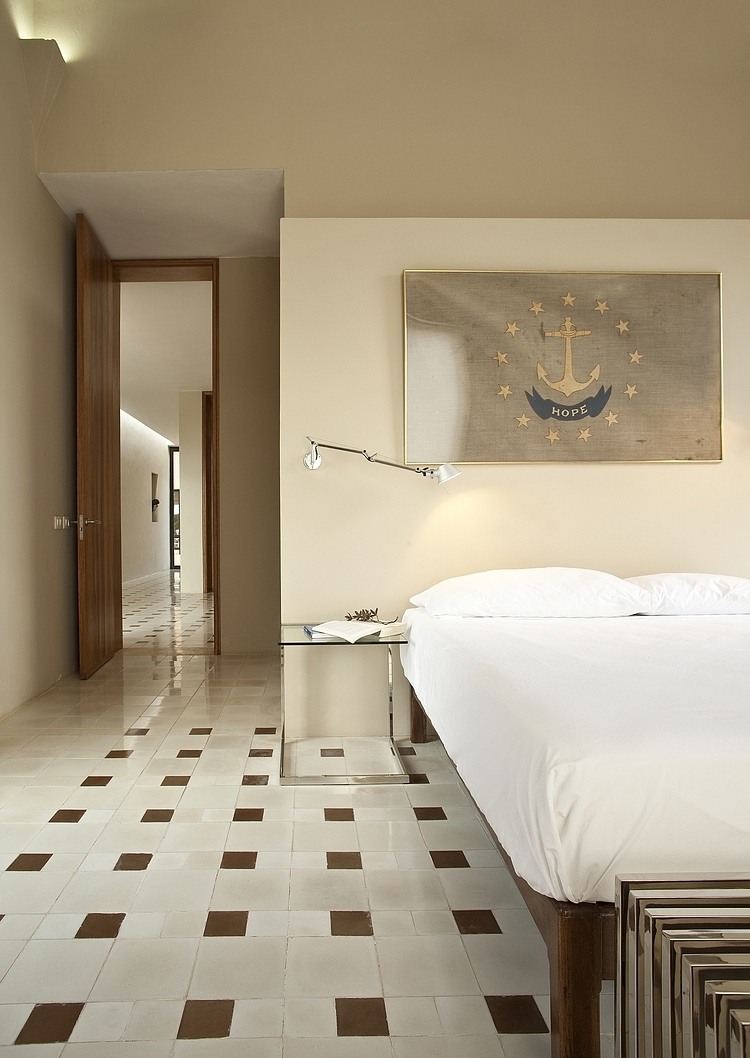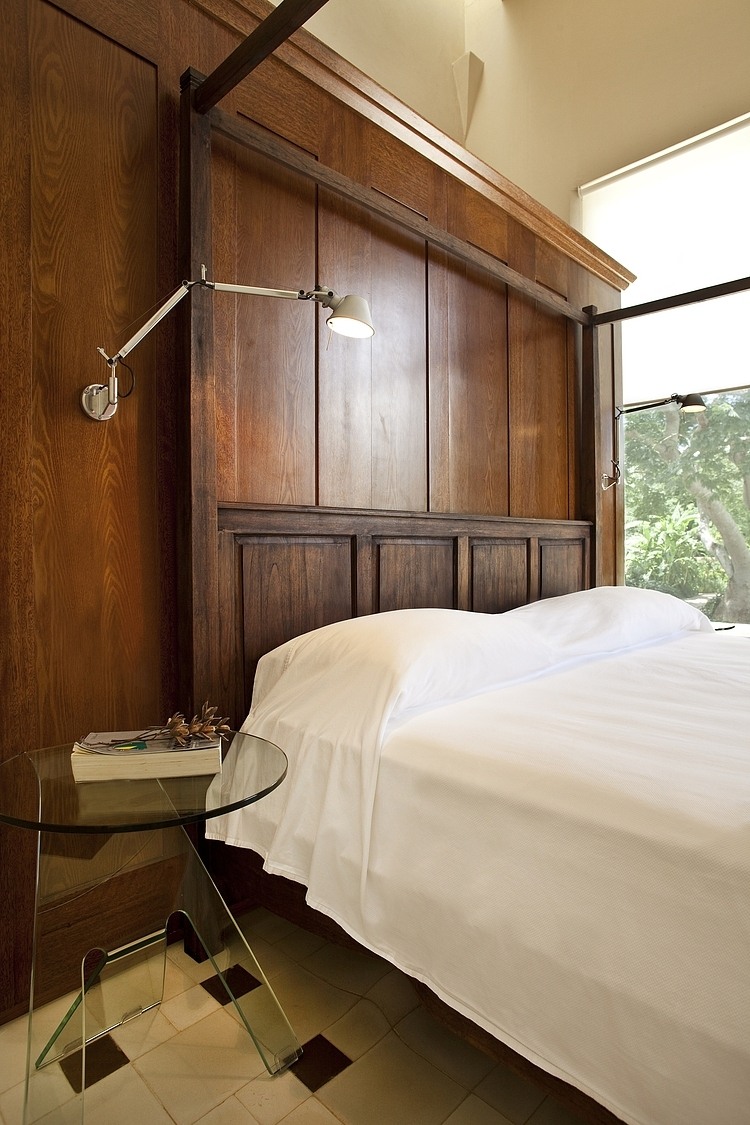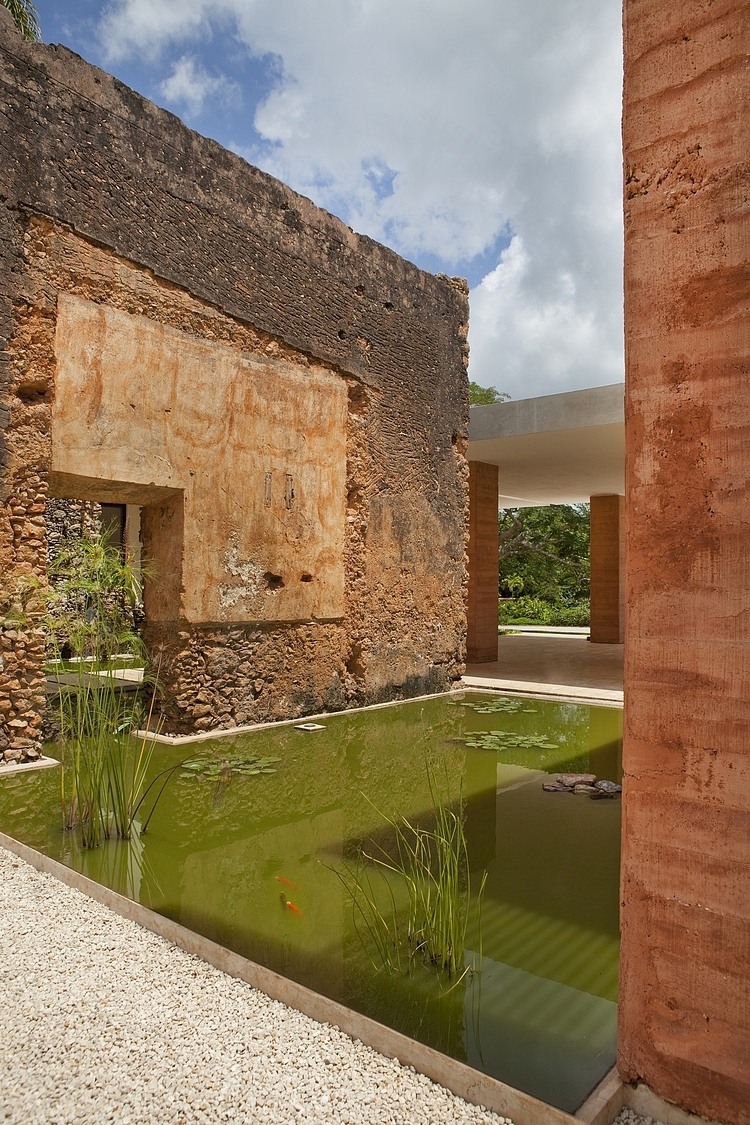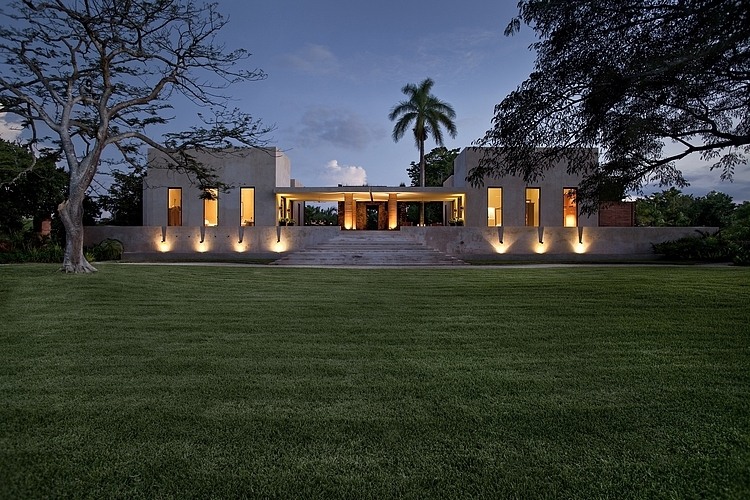Casa de Campo is a 19th century hacienda completely redesigned by Reyes Ríos + Larraiín Arquitectos, and is located in Seyé, Yucatán, Mexico.













The hacienda was built between 1880 and 1910 for the production of henequen fiber, a very important activity in Yucatan, México. The descents of this activity caused the abandonment of the hacienda, and it converted into a modest rustic ranch dedicated to farming and beekeeping.
With the loose of its original use, the property was severely deteriorated. When the property was acquired by its actual owners, the principal house was ruined, just conserving a roofless antique construction of stone masonry.
The project’s concept is to conserve and consolidate the historical preexistence without recycling it as built space. It was proposed to give a treatment of an isolated object-space, surrounded by water gardens and the new construction that contains it. It works like an open hall that is in communication with the new construction, operating like a “hinge” that articulates the new with the old one.
The project also rescues and updates some very local old techniques for finishes that were necessary to reinvent, as modern materials were introduced in order to assure a clear connection with its particular site and current time. The facades were covered with a special stucco obtained from the resin of the bark of an endemic tree called “chukum”. The concrete muro-placa were colados en sitio using red mud obtained from the south of Yucatan called “Cancab” as an agregado. Both with unique features related to the place.
The new volumety –the dimension of spaces, the height of the roofs, the voids proportion, the orientation and disposition of the windows-, are a contemporary recreation of the ancient architecture of the haciendas henequeneras of Yucatan, Mexico. The project is also a modern reinterpretation of the architectural typology of the haciendas.



